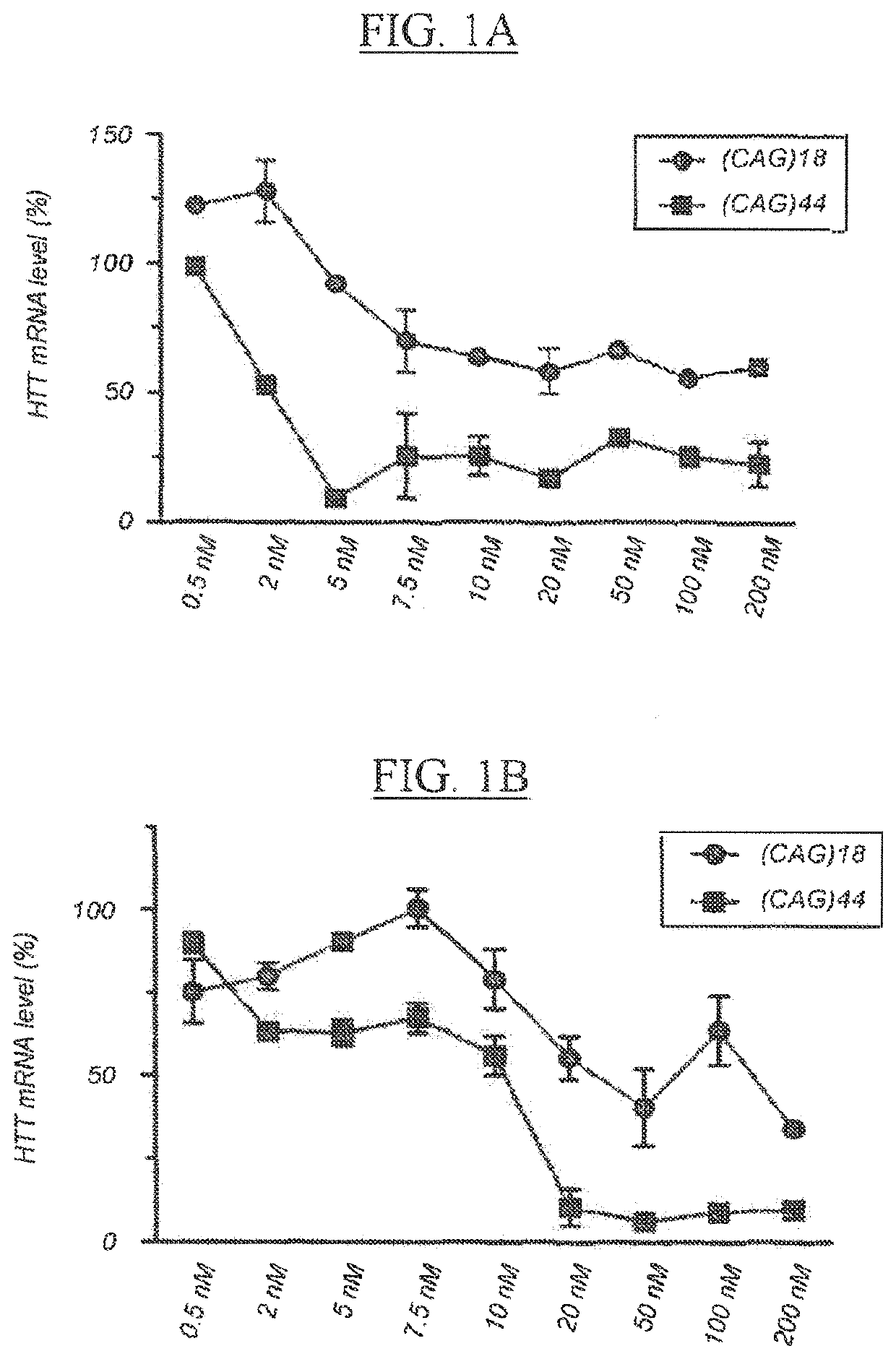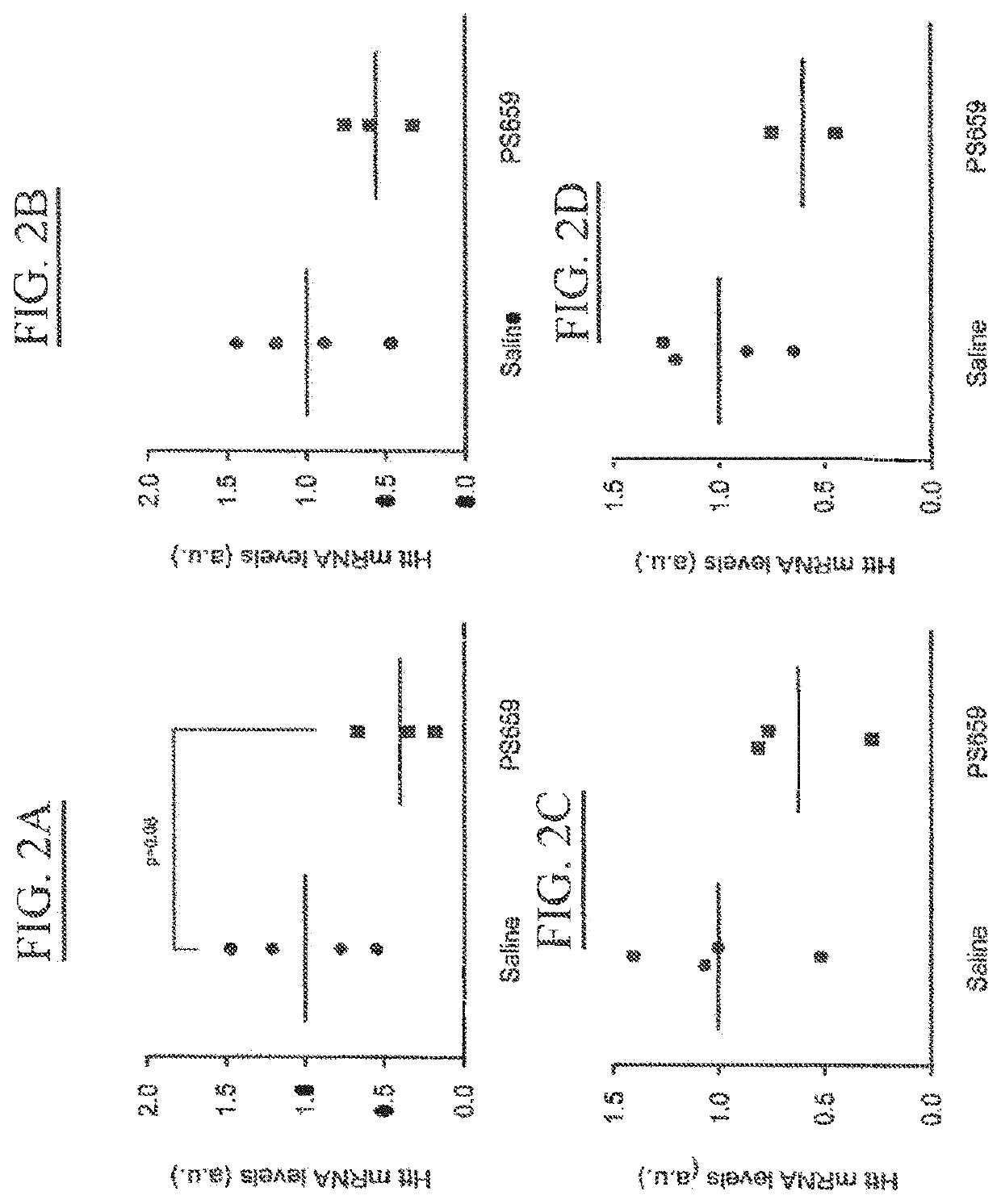RNA modulating oligonucleotides with improved characteristics for the treatment of neuromuscular disorders
a technology of oligonucleotides and neuromuscular disorders, applied in the field of human genetics, can solve the problems of large protein deposits, cell death, and impaired nerve control
- Summary
- Abstract
- Description
- Claims
- Application Information
AI Technical Summary
Benefits of technology
Problems solved by technology
Method used
Image
Examples
example 1
Introduction
[0341]The particular characteristics of a chosen antisense oligonucleotide (AON) chemistry may at least in part enhance binding affinity and stability, enhance activity, improve safety, and / or reduce cost of goods by reducing length or improving synthesis and / or purification procedures. This example describes the comparative analysis of the activity of AONs designed to target the expanded (CAG)n repeat in HTT transcripts in HD fibroblasts in vitro, and includes AONs with either 5-methylcytosines (XYG)7, wherein X is 5-methylcytosine and Y=U being also identified as SEQ ID NO:90 (and derived from SEQ ID NO:2), or 5-methyluracils (XYG)7, wherein X=C and Y=5-methyluracil being also identified as SEQ ID NO: 97 (and derived from SEQ ID NO:3).
[0342]Materials and Methods
[0343]Cell Culture.
[0344]Patient derived HD fibroblasts (GM04022) (purchased from Coriell Cell Repositories, Camden, USA) were cultured at 37° C. and 5% CO2 in Minimal Essential Medium (MEM) (Gibco Invitrogen, C...
example 2
Introduction
[0356]PS659 (XYG)7, wherein X is 5-methylcytosine and Y=U also identified as SEQ ID NO: 90 (derived from SEQ ID NO:2), was selected from in vitro studies as most efficient and safe candidate. This example describes its activity in a transgenic HD rat model after a series of direct intraventricular injections.
[0357]Materials and Methods
[0358]Animals.
[0359]Transgenic HD rats carry a truncated Huntington cDNA fragment with 51 CAG repeats under the control of the native rat Huntington promoter. The expressed gene product is about 75 kDa, corresponding to 22% of the full-length Huntington (cDNA position 324-2321, amino acid position 1-709 / 825, corresponding to exon 1-16), under the control of 886 bp of the rat Huntington promoter (von Hörsten S. et al.). All animal experiments were approved by the Institutional Animal Care and Use Committees of the Maastricht University, Maastricht.
[0360]Oligonucleotides.
[0361]PS659 (XYG)7, wherein X is 5-methylcytosine and Y=U also identifie...
PUM
| Property | Measurement | Unit |
|---|---|---|
| total volume | aaaaa | aaaaa |
| length | aaaaa | aaaaa |
| permeability | aaaaa | aaaaa |
Abstract
Description
Claims
Application Information
 Login to View More
Login to View More - R&D
- Intellectual Property
- Life Sciences
- Materials
- Tech Scout
- Unparalleled Data Quality
- Higher Quality Content
- 60% Fewer Hallucinations
Browse by: Latest US Patents, China's latest patents, Technical Efficacy Thesaurus, Application Domain, Technology Topic, Popular Technical Reports.
© 2025 PatSnap. All rights reserved.Legal|Privacy policy|Modern Slavery Act Transparency Statement|Sitemap|About US| Contact US: help@patsnap.com



